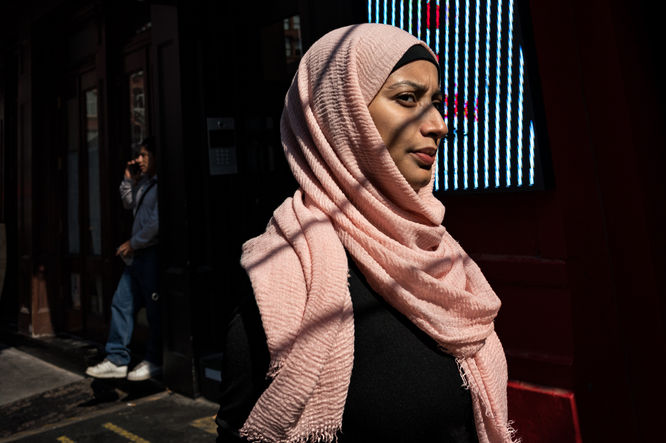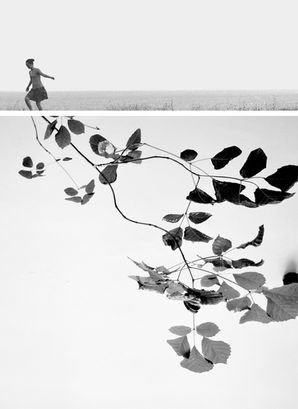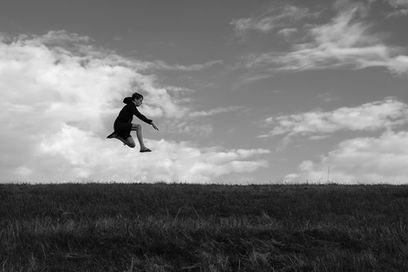
NOD OF RECOGNITION
November 25, 2020
INTERVIEW
PHOTOGRAPHY B Jane Levine
INTERVIEW Melanie Meggs
The power of a single moment, captured in time and space, can tell us something profound about ourselves. B Jane Levine knows this like few others — she has made it her life’s work to capture these moments in a series of candid photographs of strangers encountered on the streets of New York City.
Raised in the suburbs of New Jersey and a Columbia University PhD holder in Biochemistry, B Jane has always had an eye for what lies beneath the surface. After raising her family, she shifted her focus from molecular biology research to photography and began taking classes at the International Center of Photography and the School of Visual Arts. Armed with her newfound skills, she set off on photography trips around the world, exploring various genres from street photography, landscape photography and long exposure cityscapes.
Now, B Jane has come full circle and started a series of candid portraits capturing strangers that possess a certain characteristic, gesture or physical trait she identifies as part of her own story. This series, called “Nod of Recognition”, is a self-portrait of sorts, comprised of moments and stories that resonate with her own personal history. Through her captivating photographs, B Jane invites us to look beyond the surface — to explore the depths of our own lives and recognize the pieces that make us unique.

“I was trained as a biochemist to be an observer and a practitioner of rigorous methodical methods. My creative mind is inspired and nourished through the storytelling in the creative arts of film, theater, and visual arts. My introduction to photography, about 20 years ago, was my own attempt at a creative expression and initially my approach to the process of shooting, developing and printing took a methodical approach similar to my training in the scientific method.”
IN CONVERSATION WITH B JANE LEVINE
THE PICTORIAL LIST: B Jane please tell us about yourself. When did you start getting interested in photography?
B JANE LEVINE: I grew up in a middle class family in the suburbs of New Jersey. I am the middle child of three children. It was a time when we were given a lot of freedom to explore our immediate surroundings with very minimal adult supervision. I was encouraged to think for myself, be creative, curious and conduct myself in a manner that was respectful of those around me.
I was trained as a biochemist to be an observer and a practitioner of rigorous methodical methods. My creative mind is inspired and nourished through the storytelling in the creative arts of film, theater, and visual arts. My introduction to photography, about 20 years ago, was my own attempt at a creative expression and initially my approach to the process of shooting, developing and printing took a methodical approach similar to my training in the scientific method.
I enrolled in many classes at International Center of Photography (ICP) and School for Visual Arts (SVA) to learn the process of shooting, film development and printing as well as the history of photography and to gain an understanding of artistic expression through photography. Eventually I converted to shooting digitally as the technology improved. I practice the art of photography almost everyday whether I am out shooting, viewing a photography exhibit, participating in photography groups with others or reading about photographer’s inspirations and processes.
TPL: Where do you find your inspiration?
BJL: My inspirations come from all forms of artistic expression including books, paintings, film, and photography. I have the opportunity to visit the many museums in New York on a regular basis. I always find inspiration for my photography after viewing an exhibition, whether it is stylistic or process or both.
Earlier this winter I visited the exhibition “Vida Americana: Mexican Muralists Remake American Art, 1925-1945” at the Whitney Museum of American Art in New York. The show included the early work of Jackson Pollock, influenced by José Clemente Orozco, Diego Rivera and David Alfaro Siqueiros and other Mexican Muralists. Jackson Pollock painted his versions of Orozco’s paintings and they were exhibited side by side in this exhibit. This is so enlightening as it sheds light on some of the influences that helped shape Jackson Pollack’s iconic Abstract Expressionist paintings. I use this as an example of why it is so important to view so many different forms of expression, as the influence on my work is sometimes so subtle and may not always be evident until the work I create has time to settle in my mind.
TPL: Is there anything you want to express through your photography? And what are some of the elements you always try to include in your photographs?
BJL: I am a candid shooter. I prefer to capture moments on the street without the knowledge of the subject so that the expression, gesture and/or movement are authentic. Sometimes I get caught and a subject will give me that nod of recognition at the moment of the shot or after I press the shutter. I am drawn to creating layered scenes either separated or compressed, as well as up close candid portraits.
Experimentation keeps me in the moment. I always try to respect the subjects that I photograph. People show themselves on the street the way they want others to perceive them. I take an image of a moment, which I observe with no other intent other than to memorialize the moment, which I recognize is real for the subject as well as myself. The creation of a candid image on the street has been a reawakening or a rediscovery of parts of my life that were taken away though loss or just simply forgotten.
TPL: Do you prefer to shoot alone or with friends?
BJL: I shoot alone. I do go out with others sometimes, but I rarely take successful images as I am too distracted by their presence. I do like to observe other photographers shooting style and I have incorporated some elements into my own shooting.
TPL: Do you have any favourite artists or photographers you would like to share with us, and the reason for their significance?
BJL: Joel Meyerowitz, Alex Webb, Helen Levitt, William Eggleston, Philip-Lorca di Corcia, Garry Winogrand, Saul Leiter, Jeff Mermelstein, Lisette Model, and Katy Grannan are some of my favorite photographers. Color, light, layers all combine to create an image with many meanings. I believe that I have incorporated stylistic elements from many of these photographers in my image making. In addition, many of these photographers have/had expressed a personal principle to persist and focus in creating images as the central goal of their life. I have internalized this idea and I have incorporated a habit of creating photographs as an integral part of how I visualize the space I occupy.
TPL: Do you have a favourite quote or saying that resonates with you?
BJL: Joel Meyerowitz wrote in How I Make Photographs: "My process begins with having a sense of awe. When I start to feel that, I go with it. Keep your eyes open and see what you can discover."
I follow this sentiment whole-heartedly when I go out to shoot on the streets. I often go out with no expectations of subject matter other than looking for a moment, which elicits some emotion that I respond to with the subject, it is mainly driven by an internal signal that connects me to the subject or situation. I need to be open to all types of encounters or situations. This is when my best shots are taken. Often I shoot a few images and walk on my way, but sometimes I find that a place has great potential and I wait around for a scene to evolve.
I approach the street with a curiosity developed to explore the boundaries outside my control, looking for moments that either intrigue my sense of place or remind me of internal moments which I find to be familiar yet confusingly unknown to me.
The creation of a candid image on the street has been a reawakening or a rediscovery of parts of my life that were taken away though loss or just simply forgotten.

TPL: Has your style of shooting changed since you first started?
BJL: Yes, I have become more deliberate in my intent in creating images where I can observe them afterwards and feel my presence in the center of the scene. This has meant being close to the subject. I also mainly shoot in color now so I have learned to be acutely aware of color palette in a scene.
TPL: Where is your favourite place to photograph?
BJL: New York has been a place that I can wander the streets relatively inconspicuously and feel as if I am part of a bigger society. The simple pleasure of observing both mundane and exquisitely exotic moments feeds my continual desire to explore neighborhoods and places that are outside my everyday experiences. I revisit neighborhoods or streets often, following the light and rhythm of movement of people.
TPL: How does the equipment you use help you in achieving your vision in your photography? Do you have a preferred lens/focal length?
BJL: The majority of my shooting is with a Sony full frame mirrorless camera with a 35mm prime lens. I also use a small Fujifilm 100F with a 35mm equivalent lens.
It is critical to know your equipment so that it is not a limitation. I check the settings often to ensure that I have not inadvertently changed a crucial setting. I go out and shoot as often as possible. If I am not immediately drawn to particular subjects or do not have a specific intent, I allow myself to get lost in observing the scene. The practice and journey has helped me discover what I want to say through my images.
TPL: Are there any special projects you are currently working on that you would like to let everyone know about?
BJL: Nod of Recognition is a series of portraits of strangers captured on the streets of New York. I walk, observe, and photograph people, following the path of light as it moves around the city. I highlight a moment in time juxtaposed against today’s incessant world. I use the light and composition to frame the subject in this found setting. I attempt to capture authentic moments when my subject is unaware of my presence. The people in my photographs all project a characteristic, gesture, or physical trait that I recognize in myself. This series is a composite of pieces of myself – a self-portrait.
TPL: What are some of your goals as an artist? Where do you see yourself or hope to see yourself in five years?
BJL: I photograph to cut out the noise of the world and to find the human elements that makes me feel part of the society. Everyday I get up and look forward to what the streets have to offer. The process and expression of photographing has become so integral to my life and I hope to continue to evolve as an artist. I continue to experiment with creating images with separated layers, which are more narrative and images with compressed layers, which evoke a more ambiguous, emotional sense.
TPL: "When I am not out photographing, I (like to)…
BJL: I am visiting a museum, reading a book, or traveling the world."

B Jane's photography is an awe-inspiring journey that captures the essence of life in New York City. Her candid portraits capture her love for the city and its people, providing an intimate and intimate glimpse into the lives she touches. If you want to experience and appreciate the beauty of New York City through B Jane's eyes, be sure to check out her photography using the links below.






































